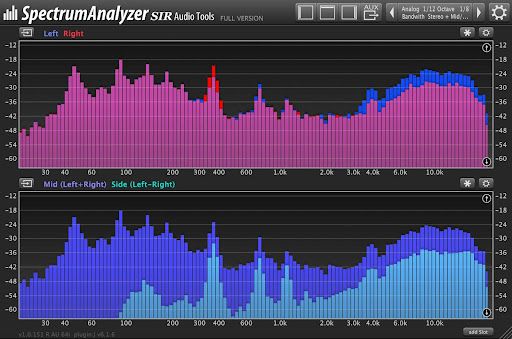Spectrum analyzers Promax
Exploring Wideband Spectrum Measurement Technology and Applications of Modern Spectrum Analyzers
In the fields of electronics and telecommunications, spectrum analyzers are used to measure and analyze signals in the frequency domain. With a wide frequency range from 1000 to 1500 MHz, this method plays an essential role in many modern engineering applications.

What is Wideband Spectrum Measurement?
Wideband spectrum measurement is the process of identifying and analyzing signals within a large frequency range, for example from 1000 MHz to 1500 MHz. This measurement helps to recognize signal components, power levels, occupied bandwidth, and phenomena such as interference or signal distortion within that frequency range. This method is commonly used in systems like mobile networks, digital television, radar, and other wireless devices.
How Does a Spectrum Analyzer Work? Why Is It Necessary for Wideband Spectrum Measurement?
A spectrum analyzer is an electronic device used to measure signal strength by frequency or wavelength, displaying the signal spectrum on a screen with frequency on the horizontal axis and amplitude or power on the vertical axis. Spectrum analyzers help users to:
Accurately determine the frequency and amplitude of signals within the measured band.
Measure the occupied bandwidth, i.e., the frequency range used by the signal at a certain percentage of power.
Analyze distortion components, interference, and other signal characteristics.
Detect and troubleshoot issues in communication systems and electronic devices.
Modern spectrum analyzers may be swept spectrum analyzers, real-time spectrum analyzers, or vector signal analyzers, each suited for different measurement purposes.
3. Steps for Wideband Spectrum Measurement from 1000 to 1500 MHz
3.1 Equipment Preparation
Select a spectrum analyzer with a frequency range covering at least 1000 MHz to 1500 MHz, ensuring appropriate resolution bandwidth and video bandwidth for accurate signal measurement.
3.2 Measurement Mode Setup
Set the detection mode to sample detection or RMS detection depending on the measurement goal. The video bandwidth should be set to more than 10 times the resolution bandwidth to reduce noise during measurement.
3.3 Frequency Point Identification
Identify two frequency points corresponding to 0.5% and 99.5% of the accumulated power to calculate the occupied bandwidth according to ITU standards.
3.4 Perform Measurement
Sweep the frequency range from 1000 to 1500 MHz, record the signal spectrum and parameters such as power, bandwidth, distortion, and interference.
3.5 Data Analysis
Use software or built-in functions on the spectrum analyzer to analyze the measured parameters, identify signal issues, and propose solutions.
4. Applications of Wideband Spectrum Measurement and Spectrum Analyzers
4.1 Telecommunications and Wireless Networks
In telecommunications, spectrum analyzers are widely used to measure and analyze signals in mobile networks (4G, 5G), WiFi, digital television, and other wireless systems. The device helps precisely determine the occupied bandwidth, detect interference and signal distortion, supporting the optimization of transmission quality and minimizing network failures.
4.2 RF Equipment Testing and Maintenance
For engineers designing, manufacturing, and repairing RF devices such as transmitters, transceivers, antennas, and wireless modules, spectrum analyzers are crucial for measuring power, frequency, bandwidth, and analyzing signal distortion. This helps detect faults in circuits and RF systems, improving device performance and stability.
4.2 Signal Interference Analysis and Mitigation
Signal interference is a major cause of degradation in communication quality and electronic devices. Spectrum analyzers help detect interference sources, analyze their levels and effects across a wide frequency range, and propose effective mitigation measures.
Notes When Choosing a Spectrum Analyzer
Suitable Frequency Range: Ensure the device can measure from 1000 to 1500 MHz or wider as needed.
High Sensitivity and Accuracy: To capture and analyze weak and complex signals.
Bandwidth Measurement and Distortion Analysis Features: Support measurement of occupied bandwidth and other important signal characteristics.
User-Friendly Software and Interface: Facilitate easy data analysis and result storage.
Warranty and Repair Services: Choose suppliers with good after-sales service to ensure stable device operation.
-
-
-
-
-
-
-
-
-
-
-
-
-
-
-
-
-
-
-
-
-
-
-
-